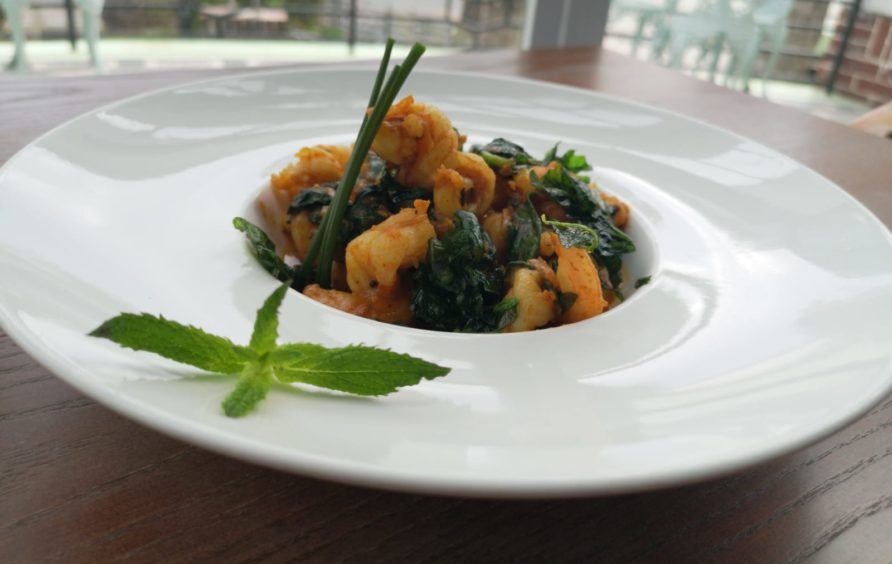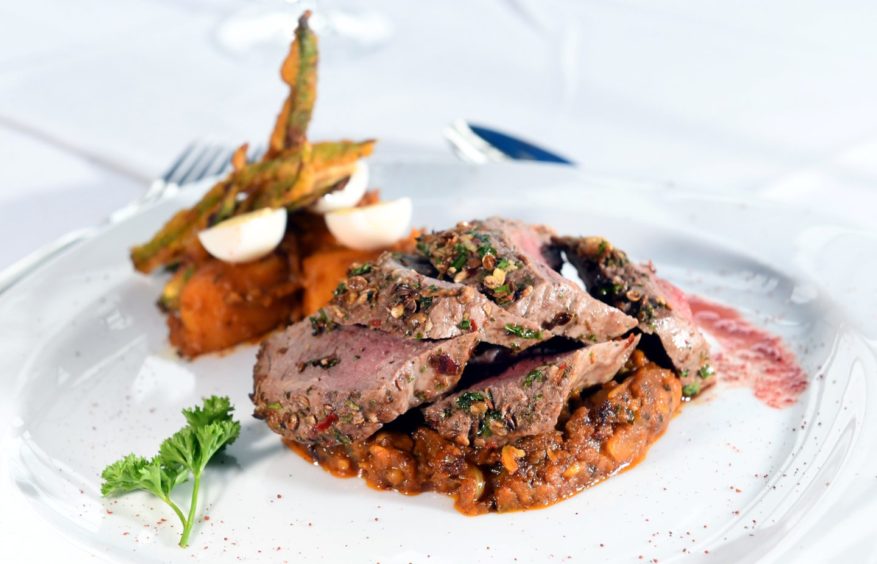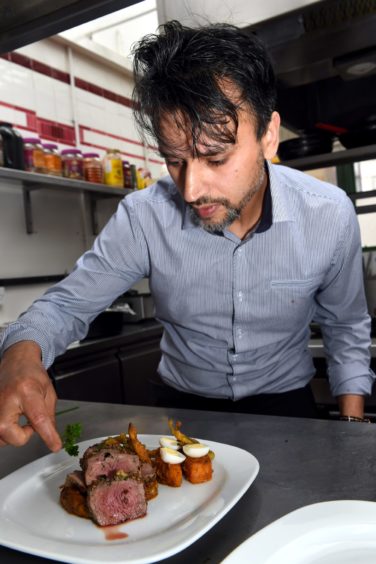The north east’s culinary landscape is a lot different now to what it was 20 years ago, thanks to this next chef in our regular series.
Anyone who is familiar with the restaurant scene in Aberdeen will no doubt have heard the name Raj Hamid. The 45-year-old chef and restaurant owner of Stonehaven’s Carron to Mumbai started working in Indian restaurants in north-east Scotland in 1991.
Born in Bangladesh but raised mostly in Sunderland before moving to Aberdeenshire in his late teens, Raj has spent the last two decades changing the face of Indian cuisine by combining his knowledge of his home fare with his love for Scottish produce.
Here he reminisces on the role that food has played throughout his life.
Childhood – prawns with baby spinach
Before moving to Sunderland and then on to Aberdeenshire, Raj spent the first few years of his life growing up in Bangladesh.
He said: “In my childhood, I remember a meal from Bangladesh that my mum used to cook. I used to go out fishing with my dad and my brothers. Literally, in front of our house, there were lakes and rivers – everything would flood! But during the floods were the best times for fishing and we’d be able to fish about 5kg of prawns within 10 minutes. In 30 minutes you’d have around 10kg of fish!
“So we were brought up eating fresh, fishing and harvesting our own vegetables from our garden. This was the lifestyle we had in Bangladesh.
“My childhood dish would be prawns with baby spinach. While we were out fishing, my mum would be out collecting herbs and vegetables, especially spinach as you can harvest that all year round.
“I still make it today but I can recall that my mum would go out and collect it then get home and cook it straight away with fresh green chillies, garlic, some turmeric and coriander.
“I have five brothers and two sisters so we were a very big family. We used to sit on the floor to eat when it was a family meal and everyone was together. If we had guests though, we’d sit at the table! Traditionally, though, we’d have to sit on the floor.”
Teens – chicken korma
After being educated in Roker, Sunderland, Raj then moved to the north-east of Scotland in 1991 to study to be a lawyer, but that ended up falling through, which led to him embarking on a culinary career path.
“In my teens I wasn’t interested in cooking and wanted to be a lawyer or something along those lines. But I wasn’t academic and studying never got into my head so I was left with no other option but to find a job.
“I thought the easiest thing would be the catering industry, which is how I got started in 1991, and curries were the main thing. I was working in restaurants where the menus were limited, people were just selling curries with chicken, lamb and prawns on their menu. You would literally have to cook the same thing every day.
“It was the same menu day in, day out for all the Indian and Bangladeshi restaurants in the region. In one restaurant, I had the opportunity to become a sous chef after two years in the kitchen. I didn’t like working with the same style and the same things every day.
“There wasn’t much competition among them to do different things either as they were all doing the same thing.
“I started going out and exploring different cuisines and spent my days off eating in various restaurants to learn how they were progressing and adapting and modernising their food.
“So I’d probably choose chicken korma to signify this time as it was one of the dishes that was prevalent in these restaurants I was trying to change. I wouldn’t choose it in the style it would be cooked in back then if I were to have it now, though, as I didn’t think it was healthy enough.
“I’d found a way to reduce some of the quantities of the ingredients, such as the cream, to make it healthier but also enhance the flavour of the other ingredients. Now, I would say, 99% of the restaurants in the north-east cook their chicken korma my way.”
Early 20s – tandoori lamb chops
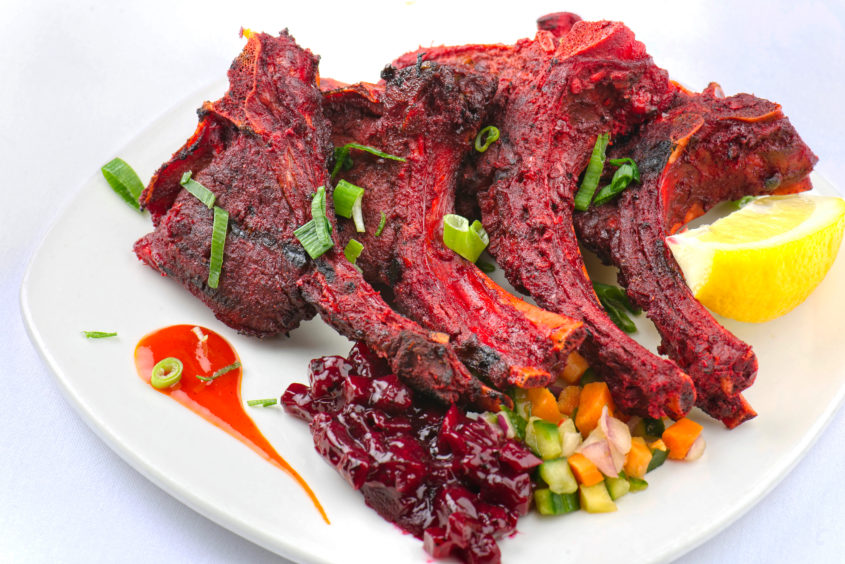
“In my early 20s I was given the opportunity to start a joint business with my employer at the time, because of what I was trying to do in the industry and the changes I was trying to make.
“I had the opportunity to change the menu slightly. It wasn’t completely what I wanted but it was a little bit the way I wanted and was the next step I had in changing the industry in the north east.
“There were very few fresh suppliers at the time but one thing I was able to get a hold of was lamb chops from a local butcher. It really liked making tandoori lamb chops, especially while trying to make local Bangladeshi food more modern.
Late 20s – smoked fish curry
In his late 20s, Raj started his own business and was given the opportunity to travel back to Asia to do research before creating his own menu.
He said: “I visited Bangladesh and India and tried the various regional dishes – not the curries and the kormas. I went to each district and remote villages to see how they got their food and what their cooking styles were. Then I came back and made a menu.
“I would say it was about 70% different from the other menus in the north east and it had regional dishes from India and Bangladesh that people couldn’t get anywhere else here. I was using a lot of smoked products – fish and beef and lamb. Smoky food is a big thing in this country but not so much in the traditional Bangladeshi restaurants and cities.
“The village people of these remote areas were smoking fish etc for themselves, it was part of their way of life, but the Bangladeshi people who were coming over here from the cities to set up restaurants had no clue that this was a thing or even what smoked fish is.
“So this sort of thing attracted customers from afar and helped make me successful, especially since I was able to get fish on my doorstep as it’s a big thing up here.”
30s – venison
In his 30s, Raj took some time out of cooking to work with some of the Indian and Bangladeshi chefs in the north east area of Scotland.
“By my 30s I had full confidence in my skills as a chef and an entrepreneur. I took some time out of cooking to work with some chefs in the north east of Scotland. Not just Bangladeshi or Indian chefs, but also European and British chefs. I wanted to learn more about their cuisines, communities and their experiences.
“I did this for about two years then came back to work in Indian cuisine. I would make different menus wherever I worked. The owners would give me full ability to change the menu and the running style of the restaurants, and I was able to make all of these Indian restaurants very successful in the north-east.
“People would hire me for the openings of restaurants. I’d give them menu ideas, work with them for their opening and take on more of a consulting role to help them get off the starting blocks.
“A lot of these restaurants owners had it in their minds that local produce was expensive so they were using suppliers from abroad to import food like chicken, when actually it was cheaper to use local produce. By this time I had become the first British-Bangladeshi chef to use local produce (as in, from Scotland) in our cuisine.
“In my late 30s I worked with local suppliers, introduced them to the restaurants in the region and helped get them set up with food that was local, as this would also help these restaurants attract local customers.
“At this point I also had the restaurant India on the Green in Ballater, just outside Aberdeen. It topped lots of tourism lists on the best places to eat while in the north of Scotland. The best selling dish for this, which I think represents this period of my life well, especially when talking about local food, was venison.
“I could sell that dish every day easily. It would be smoked in the tandoori oven for a bit and come with a sauce and some mungal lentils. I can have it on every menu and everyone loves it as it combines both cultures – a bit of Indian and a bit of Scottish.
“This is when all the Indian restaurants in the north-east started copying me, when India on the Green became so successful. Nowadays you’ll still find a few of my original dishes on the majority of their menus!”
Now – seafood
“Now, I have a restaurant called Carron to Mumbai in Stonehaven and I find I like to change the menu seasonally or every few months.
“The customers we get regularly aren’t just there to fill their stomachs, they like the whole dining experience and enjoy a changed menu with seasonal produce.
“For instance, in January I like to have a cod starter, which you won’t see in any Indian restaurant in the region.
“Now I tend to work a bit more with fish. You can’t beat a good king prawn from Bangladesh but I want to use a bit more local fish, too, and the same with meat. I just can’t go back to the traditional as I am so hooked up to the local produce on the doorstep and the local fish is just great.
Recipes
Raj’s prawn and baby spinach
(Serves 4)
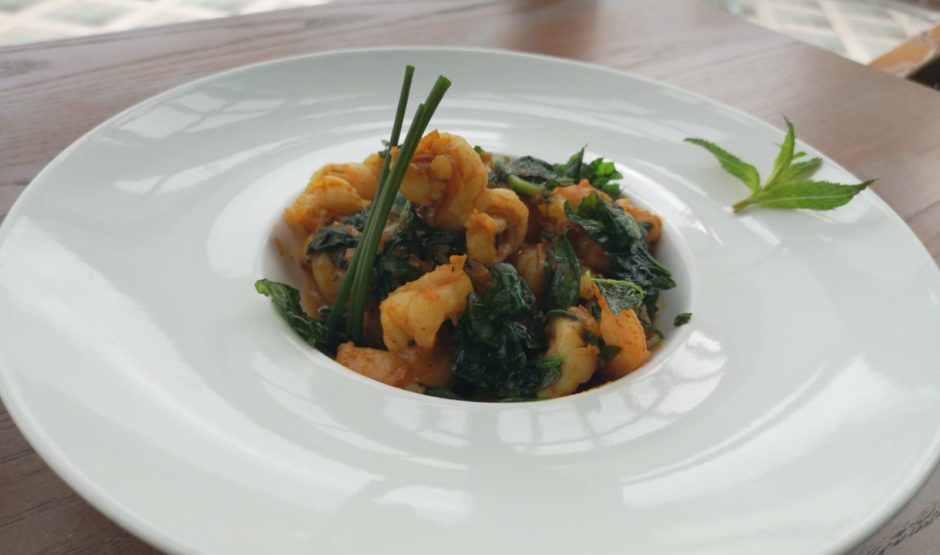
Ingredients:
- 800g medium fresh water king prawns, or whatever is available
- 500g baby spinach
- 2 tbsp olive oil
- 400g onion, finely chopped
- 5 cloves of garlic, finely chopped
- 1 red bell pepper, cubed
- ¼ lemon
- 200g cherry tomatoes
- 4 stems of rough cut spring onions
- 50g fresh coriander
- 2 tsp turmeric powder
- 2 tsp coriander powder
- 1 tsp cumin powder
- Pinch of whole mustard seeds
- Salt, to taste
Method:
- Heat a pan and add the oil.
- Drop the mustard seeds into the pan until they start to crackle. Then add the onions and salt to taste.
- Once the onions have browned, add half a cup of water and wait until the onions have become smooth.
- Add tomatoes and all the spices, then stir occasionally for two minutes.
- Add the prawns and cook for one minute, then add baby spinach and spring onions. Stir well then put lid on the pot and cook for two minutes.
- Add the fresh coriander, stir well, turn the heat down and cook for another two minutes.
- Squeeze a quarter of fresh lemon stir and it’s ready to serve garnish as you please.
Raj’s best-selling venison
Ingredients:
- Fillet of 170g locally-sourced venison
For the marinade:
- 1 pinch of sea salt to taste
- 1 pinch of Deggi Mirch crushed chilli
- 1 tsp of ground garlic
- 1 tsp of ground ginger
- 1 tsp of garam masala
- 1 tsp of cumin powder
- 1 tsp of turmeric powder
- 1 tsp of natural yoghurt
- 1 tsp of olive oil
For the main dish:
- 1 medium onion, finely chopped
- 1 tsp of garlic
- 1 tsp of ginger
- 1 tsp of turmeric
- 1 tsp of coriander
- 1 tsp of cumin
- 2 fresh chillies, sliced
- Cup of water
- 1 star anise
- 1 cardamom
- 1 cinnamon stick
- 3 pieces of butternut squash, cut into 2 inch cubes
- Fresh coriander and parsley, to garnish
Method:
- Put the Deggi Mirch crushed chilli, ground garlic and ginger, garam masala, cumin powder, turmeric powder, natural yoghurt and olive oil in a bowl and add the fillet of venison. Leave to marinade and put to the side.
- Finely chop the onion and heat a pan. Add a tablespoon of olive oil and a teaspoon of garlic and ginger paste. Add the chopped onion into the pan and stir well until the onions are sauteed.
- Add the turmeric, coriander, cumin and fresh chillies and stir well.
- Then add the water, star anise, cardamom and cinnamon stick, and turn the heat down to simmer.
- Place the butternut squash pieces in and bring the sauce to a medium texture. Set aside.
- Grill or pan sear the marinated venison to your liking. Garnish with plenty of fresh coriander and parsley.
- Plate and serve with a side of your choosing.
Sea bass with urad dahl
(Serves 4)
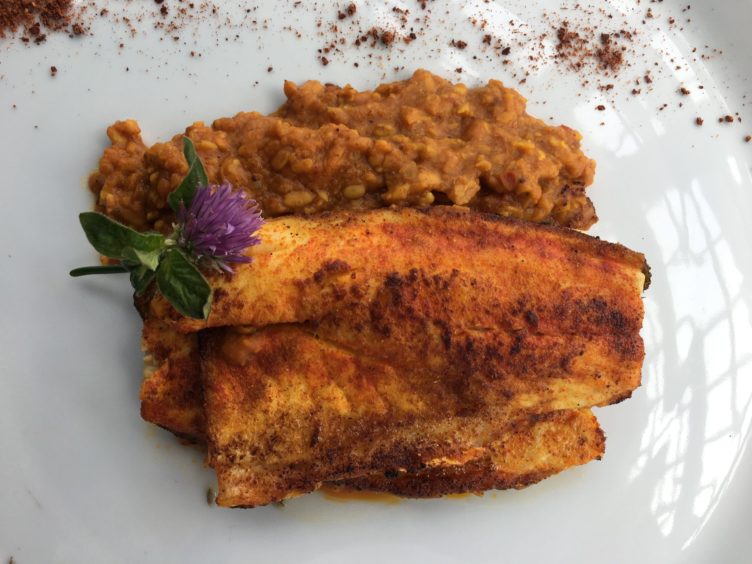
Ingredients:
- 800g wild sea bass fillets
- 3 tbsp olive oil
- 1 medium onion, finely diced
- 6 cloves of fresh garlic, finely chopped
- 1 cup of urad dahl
- 3 tsp turmeric powder
- 1 tsp Kashmiri chilli powder
- 3 tsp coriander powder
- 2 tsp garlic and ginger paste
- 1 tsp cumin powder
- Maldon salt, to taste
- 10 cherry tomatoes, chopped
- Handful fresh coriander, chopped
Method:
- The whole process will take approximately an hour. Marinade the bass fillets with pinch of turmeric, chilli, coriander powder, garlic and ginger paste, then leave aside.
- Roast the urad dahl in a pan, and stir continuously until cooked, then leave it soaked in water.
- Heat another pan and add some oil. Add the chopped garlic and wait until it turns brown. Add the diced onions and the salt and stir occasionally until the onions have been sauteed.
- Add all the spices and tomatoes, then stir well. Turn the heat down and leave for two minutes.
- Put the urad dahl in a strainer and wash with running water, then pour into the pot and stir well for two minutes.
- Add five cups of water and cook until it becomes a nice and smooth, medium thick sauce. Then add handful of fresh coriander.
- Heat a non-stick pan and drizzle with olive oil. Place the bass fillets in the pan, searing skin side to 70% then turn over and sear the other side. Finish with squeeze of fresh lime juice.
- Plate and serve.

